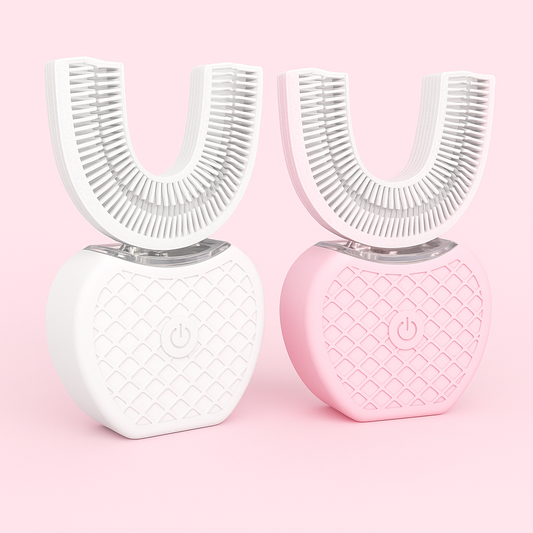Introduction
Fresh breath in dogs is more than just a pleasant feature—it’s a vital indicator of your pet’s overall health. Bad breath, or halitosis, can signal dental disease, digestive problems, or even systemic illnesses. As we move through 2025, pet owners have access to a wealth of natural and effective strategies to maintain and improve their dog’s oral health and breath quality. This comprehensive guide will help you understand the causes of bad breath in dogs and provide actionable, natural solutions to keep your dog’s breath fresh and their smile bright.
Understanding the Causes of Bad Breath in Dogs
Before diving into treatments, it’s important to understand why dogs develop bad breath. The main causes include:
- Poor Oral Hygiene: Buildup of plaque and tartar on teeth provides a breeding ground for bacteria, which produce foul odors.
- Gingivitis and Periodontal Disease: Inflammation and infection of the gums and supporting structures cause halitosis and can lead to tooth loss.
- Dietary Factors: Certain foods, especially those high in sugars or poor quality, can contribute to bad breath.
- Digestive Issues: Problems such as acid reflux, gastrointestinal infections, or imbalanced gut microbiomes may manifest as bad breath.
- Underlying Medical Conditions: Chronic diseases like diabetes, kidney failure, or liver problems can cause distinct bad odors in your dog’s breath.
- Oral Tumors or Foreign Objects: Growths or lodged objects in the mouth can cause infection and odor.
Recognizing these causes allows you to address bad breath effectively and ensure your dog’s health is not compromised.
Top Natural and Effective Ways to Improve Your Dog’s Breath in 2025
1. Establish a Daily Brushing Habit
Consistent tooth brushing remains the cornerstone of canine oral hygiene. Although it may seem challenging, establishing a positive brushing routine is achievable and rewarding. Here’s how to succeed:
- Choose the Right Tools: Use a dog-specific toothbrush or finger brush and toothpaste formulated for dogs. Avoid human toothpaste as it contains fluoride and xylitol, which are toxic to dogs.
- Start Slowly: Introduce brushing gradually — begin by letting your dog taste the toothpaste, then gently rub their teeth and gums with your finger before using a brush.
- Make It Enjoyable: Use treats, praise, and a calm voice to create positive associations with brushing.
- Frequency: Aim for daily brushing, but at minimum, brush 3-4 times weekly for effective plaque control.
Regular brushing mechanically removes plaque and disrupts bacterial colonies that cause odor.
2. Schedule Regular Veterinary Dental Exams and Professional Cleanings
Professional dental care is crucial for maintaining oral health, especially as your dog ages. Vets can detect early signs of dental or systemic diseases and safely remove hardened tartar that brushing cannot eliminate. Key benefits include:
- Prevention of periodontal disease progression
- Removal of plaque and tartar below the gumline
- Identification of oral abnormalities or tumors
- Improvement in overall breath freshness
Discuss with your vet how often your dog needs dental cleanings based on their breed, age, and oral health status.
3. Incorporate High-Quality Dental Chews and Treats
Dental chews serve a dual purpose: they satisfy your dog’s natural chewing instincts and provide mechanical cleaning of teeth. When selecting dental chews, look for:
- Veterinary Approval: Products endorsed by veterinary dental organizations are often tested for safety and efficacy.
- Natural Ingredients: Avoid chews with artificial flavors, colors, or preservatives.
- Size and Texture: Match the chew size to your dog’s breed and chewing strength to prevent choking or ingestion hazards.
Examples include rawhide chews, dental sticks, and specially formulated bones designed to reduce plaque buildup.
4. Use Vet-Recommended Water Additives
Water additives are a convenient and stress-free solution to support oral hygiene. These products reduce oral bacteria and plaque formation by being added directly to your dog’s drinking water. When choosing water additives, consider:
- Alcohol-free formulas to prevent oral dryness
- Natural antiseptic ingredients such as chlorhexidine or enzymes
- Compatibility with your dog’s overall health and any medications
Regular use complements brushing and chewing efforts without extra effort from the owner.
5. Add Crunchy Fruits and Vegetables to Your Dog’s Diet
Natural foods that require chewing help scrape plaque from teeth surfaces while providing essential nutrients and hydration. Some excellent options include:
- Carrots: Low-calorie and rich in fiber
- Apple slices: Provide vitamin C and antioxidants (always remove seeds)
- Celery stalks: Help clean teeth and freshen breath
- Cucumber slices: Hydrating and crunchy
Always introduce new foods gradually and monitor for any allergic reactions or digestive upset. Avoid toxic foods such as grapes, raisins, onions, or garlic.
6. Support Your Dog’s Digestive Health with Probiotics
Research increasingly links gut health with oral health. A balanced gut microbiome helps reduce systemic inflammation and can minimize bad breath caused by digestive disturbances. To incorporate probiotics:
- Use dog-specific probiotic supplements containing strains like Lactobacillus and Bifidobacterium
- Consider probiotic-rich foods such as plain yogurt or kefir (ensure no added sugars or artificial sweeteners)
- Consult your veterinarian before starting supplements, especially if your dog has underlying health conditions
7. Create Safe Homemade Dental Remedies
For pet owners who prefer natural, DIY solutions, there are simple recipes to help freshen breath and maintain oral hygiene:
- Baking Soda Toothpaste: Mix a small amount of baking soda with water to form a paste. Use this sparingly to brush your dog’s teeth, as excessive use can irritate gums.
- Coconut Oil Application: Coconut oil has antimicrobial properties. You can apply a small amount to your dog’s gums or mix it into their food.
- Herbal Rinses: Mild rinses made from chamomile or neem extracts can soothe gums and reduce bacteria. Always dilute properly and vet-check before use.
Be cautious to avoid toxic ingredients and monitor your dog’s reaction to homemade products.
Additional Tips for Maintaining Your Dog’s Breath
- Hydration: Fresh, clean water should always be available to keep the mouth moist and help wash away bacteria.
- Diet Quality: Feed a balanced, high-quality diet tailored to your dog’s needs. Some specialized diets support oral health.
- Avoid Table Scraps: Human foods can contribute to plaque and cause digestive upset.
- Monitor and Respond: Watch for signs of oral pain such as reluctance to eat, pawing at the mouth, or drooling, and seek veterinary care promptly.
- Toys: Provide durable chew toys that help clean teeth and stimulate gums.
When to Consult Your Veterinarian
If bad breath persists despite your efforts, it could indicate a deeper health issue. Seek veterinary advice if you notice:
- Persistent foul odor
- Bleeding gums or excessive drooling
- Loose, broken, or missing teeth
- Changes in appetite or behavior
- Swelling in the mouth or face
Your veterinarian can perform diagnostic tests and recommend treatments ranging from professional dental care to addressing systemic diseases.
Conclusion
Improving your dog’s breath naturally and effectively in 2025 requires a holistic, consistent approach that combines good oral hygiene, diet, veterinary care, and natural remedies. By integrating daily brushing, regular professional check-ups, dental chews, probiotics, and safe dietary additions, you can help your dog maintain fresh breath and optimal health.
Remember, fresh breath is a reflection of your dog’s wellbeing. Prioritizing oral care enhances not only your dog’s quality of life but also strengthens the loving bond you share. Begin implementing these strategies today to enjoy close, odor-free moments with your furry companion for many years to come.


